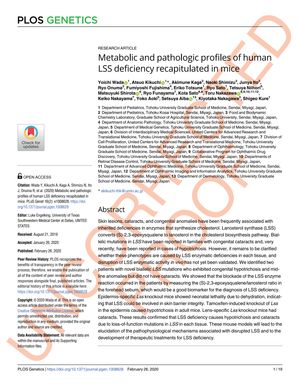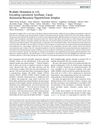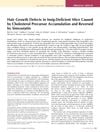Metabolic and Pathologic Profiles of Human LSS Deficiency Recapitulated in Mice
February 2020
in “
PLOS genetics
”

TLDR Mice with LSS deficiency showed hair loss and cataracts, similar to humans, and can help in understanding and treating this condition.
The study investigated the effects of Lanosterol synthase (LSS) deficiency, which is known to be associated with skin lesions, cataracts, and congenital anomalies due to its role in cholesterol synthesis. Researchers identified two patients with novel biallelic LSS mutations presenting with congenital hypotrichosis (hair loss) and midline anomalies but without cataracts. They confirmed LSS enzyme blockade in these patients by measuring the (S)-2,3-epoxysqualene/lanosterol ratio in forehead sebum, suggesting its potential as a diagnostic biomarker for LSS deficiency. Mouse models with tissue-specific Lss knockouts were created; epidermis-specific Lss knockout mice exhibited neonatal lethality due to dehydration, indicating LSS's role in skin barrier integrity, while tamoxifen-induced epidermal Lss knockout in adult mice led to hypotrichosis. Lens-specific Lss knockout mice developed cataracts. These findings confirmed that LSS deficiency leads to hypotrichosis and cataracts due to loss-of-function mutations in specific tissues, and the mouse models will help in understanding the pathophysiology of LSS disruption and in developing treatments for LSS deficiency.




